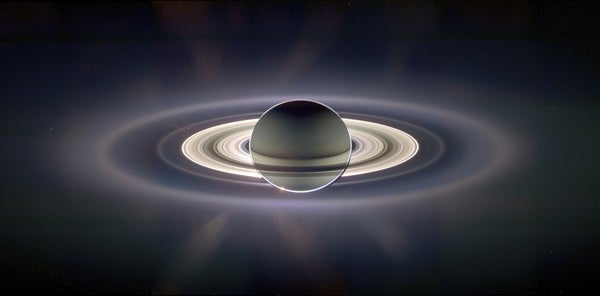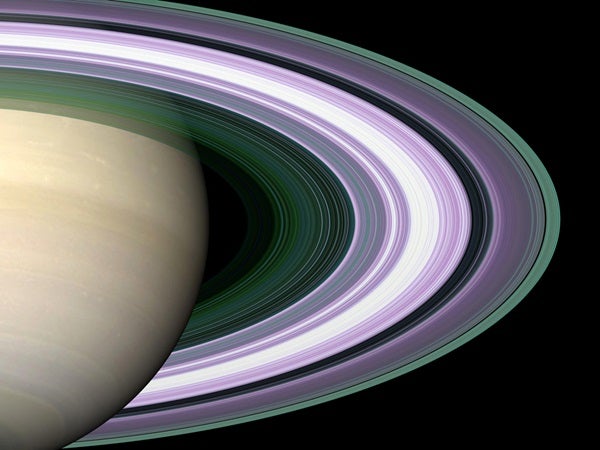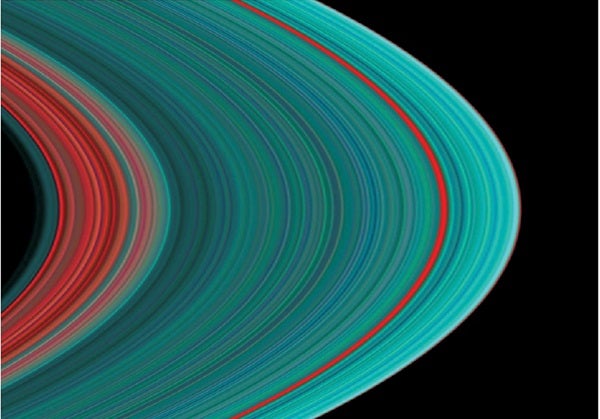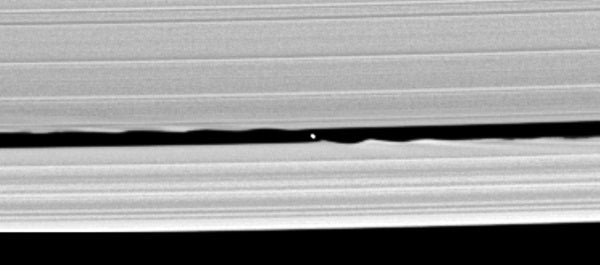
Bringing the universe to your door. We’re excited to announce Astronomy magazine’s new Space and Beyond subscription box – a quarterly adventure, curated with an astronomy-themed collection in every box. Learn More >>.
In 1980 and 1981, scientists got their first great view of Saturn’s rings when the Voyager 1 and 2 spacecraft conducted scientific operations up close. Saturn’s globe measures 74,900 miles (120,590km) across; its rings span 300,000 miles (483,000km).
The rings are divided into groups, designated C, B, and A, working outward from the planet. Visible in a small telescope is the black band that separates rings B and A called the Cassini Division, after Giovanni Cassini, who discovered the gap in 1675.
Astronomers continue to discover fainter rings. They are designated D (closest to the planet), F (a narrow feature just outside the A ring), and two distant rings called G and E. The early view of Saturn’s rings as a continuous flat disk like a CD has changed, courtesy of the Voyagers. Today, astronomers realize the rings comprise countless thousands of particles of dirty water ice ranging from microns to meters in size.
The Voyagers found surprising structures in the rings. Unresolved ringlets and gaps might be caused by tiny satellites orbiting within the rings, astronomers reasoned.
By observing stars behind Saturn’s rings, Voyager resolved objects as small as 1,000 feet (305 meters) across and showed that few gaps exist in certain rings. Instead, density waves create the effect. Some of the rings contain clumps and spokes. In the wake of the Voyagers, many unanswered questions remained.
The next chapter in Saturn exploration began in 2004 when the Cassini-Huygens spacecraft entered saturnian orbit. The mission at Saturn continues; Cassini has taken a vast amount of data and produced thousands of images, and the European Huygens probe touched down on Saturn’s largest moon, Titan. Careful analysis of Saturn’s rings remains an ongoing project.
In April 2006, Cassini findings shed some light on the origin of the ring system. Strangely shaped gaps in some of the rings suggest elusive moonlets exist and support the notion that the rings are debris from an icy moon that broke up eons ago as a result of a violent collision.
The scenario may be that, a few hundred million years ago, a comet or asteroid slammed into an icy moon, breaking it into pieces. Saturn’s titanic gravity then smoothed out the pieces into a flattened disk around the planet. Data collected during five of Cassini’s final 22 close passes by Saturn before it plummeted into the ringed planet in 2017 suggests that Saturn’s rings are just 150 to 300 million years old. Though these results are not quite conclusive, after hundreds of years, the origin of the Saturn’s mysterious rings is finally beginning to come into focus.













